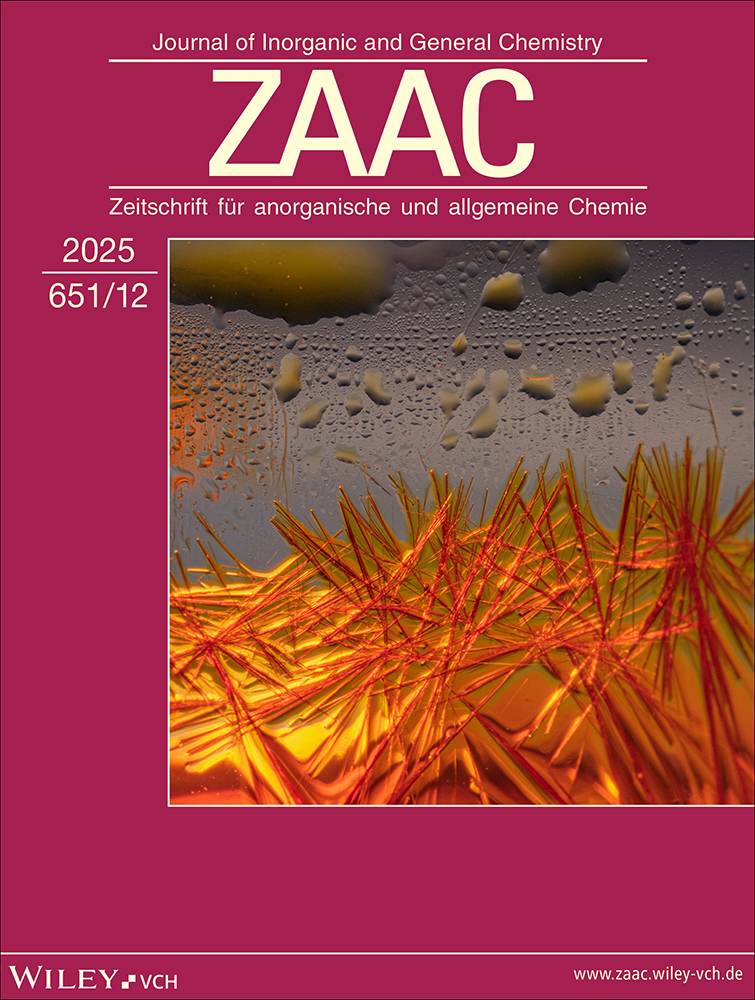Synthese, IR-Spektrum und Kristallstruktur von Sb12O18(OH)2Cl22 · 2CH2Cl2
Abstract
deDie Titelverbindung entsteht in Form farbloser Kristalle bei der Reaktion von Sb5O7Cl11 mit Dichlormethan bei 20°C. Sb12O18(OH)2Cl22 · 2CH2Cl2 kristallisiert monoklin in der Raumgruppe P21/n mit zwei Formeleinheiten pro Elementarzelle. Strukturlösung mit 2696 unabhängigen beobachteten Reflexen, R = 0,042. Gitterkonstanten bei 19°C: a = 1350,2; b = 1466,7; c = 1392,9 pm, b̃ = 97,925°. Die verzerrt oktaedrisch koordinierten und über Sauerstoffatome verbrückten Antimonatome bilden ein molekulares Gerüst, das als ein durch terminale Chlorliganden isolierter Ausschnitt aus der Rutilstruktur angesehen werden kann. Das Solvatmolekül ist durch eine Wasserstoffbrücke OH…Cl assoziiert.
Abstract
enSynthesis, IR Spectrum, and Crystal Structure of Sb12O18(OH)2Cl22 · 2CH2Cl2
The title compound has been prepared by the reaction of Sb5O7Cl11 with dichloromethane at 20°C, forming colourless, moisture sensitive crystals. Sb12O18(OH)2Cl22 · 2CH2Cl2 crystallizes monoclinically in the space group P21/n with two formula units per unit cell. Structure solution with 2696 unique observed reflections, R = 0.042. Lattice dimensions at 19°C: a = 1350.2, b = 1466.7, c = 1392.9 pm, b̃ = 97.925°. The distorted octahedrally coordinated antimony atoms, bridged by oxygen atoms, exhibit a molecular array which may be seen as a fragment of the rutile type structure, isolated by terminal chloride ligands. The solvate molecule is associated by a hydrogen bridge OH···Cl.




